Inbound and Outbound Call Centers: The Backbone of Efficient Customer Communication
1. What is an Inbound Call Center?
An inbound call center is primarily focused on handling incoming customer calls. These can include inquiries about products or services, technical support, order placement, and more. The goal of an inbound call center is to resolve customer issues efficiently and provide a seamless customer service experience.
Key Features of an Inbound Call Center
Customer Support: The primary function of inbound call centers is to provide customer service. Whether it’s answering questions, troubleshooting issues, or processing complaints, these centers act as the voice of the company.
Order Processing: In industries such as e-commerce or retail, inbound call centers handle customer orders and process transactions. Ensuring a smooth, error-free process is crucial for customer satisfaction.
Technical Support: Inbound call centers often support customers with technical issues, helping them troubleshoot software or hardware problems. This is especially common in sectors such as telecommunications, IT, and electronics.
Helpdesk Services: Inbound call centers also function as helpdesks for businesses, offering immediate solutions for general queries. This function is often critical for businesses offering SaaS (Software as a Service) or complex solutions that require guidance.
Customer Retention: Inbound call centers play a significant role in customer retention by resolving issues quickly and keeping the customer satisfied. An efficient and empathetic support team can lead to long-term customer loyalty.
Benefits of Inbound Call Centers
Enhanced Customer Experience: An inbound call center is a direct line of communication for customers to reach the business. The quicker and more efficiently their issues are resolved, the better the overall experience.
Increased Customer Loyalty: Effective and prompt customer service can turn one-time buyers into long-term customers. Resolving issues, answering questions, and providing guidance builds trust and loyalty.
Improved Efficiency: By centralizing customer support in one location, businesses can streamline their operations and ensure consistency in responses and service quality.
Brand Reputation: Excellent inbound service creates a positive impression of the brand, which can lead to word-of-mouth referrals and a strong reputation in the marketplace.
2. What is an Outbound Call Center?
An outbound call center focuses on reaching out to customers or potential leads. Unlike inbound centers, where calls are initiated by the customer, outbound call centers involve agents making calls on behalf of the company for various purposes, such as sales, marketing, surveys, or lead generation.
Key Features of an Outbound Call Center
Telemarketing and Sales: One of the primary functions of outbound call centers is to generate sales through cold calling or follow-up calls. Telemarketing involves calling potential customers to offer products or services, explain benefits, and close sales.
Lead Generation: Outbound call centers are crucial for identifying and generating leads. This may include reaching out to prospects, qualifying their interest, and setting up appointments for sales teams to follow up.
Customer Surveys: Businesses rely on outbound call centers to gather feedback from customers through surveys. These insights can help companies improve their offerings and services.
Appointment Setting: In many industries, outbound agents make calls to schedule appointments for sales meetings, product demos, or consultations. This is particularly common in sectors such as real estate, insurance, and healthcare.
Follow-up Calls: Outbound call centers are used to follow up with customers after a service has been rendered. This can include checking customer satisfaction or offering additional products and services.
Debt Collection: Outbound centers often handle debt collection on behalf of businesses. Agents reach out to customers with overdue payments and work on recovering the amount owed.
Benefits of Outbound Call Centers
Increased Sales: By reaching out to potential customers and following up on leads, outbound call centers are instrumental in driving sales and revenue growth.
Proactive Customer Engagement: Instead of waiting for customers to approach the business, outbound call centers allow companies to engage with them proactively. This can result in higher conversion rates and improved customer relationships.
Market Research: Outbound call centers are valuable for collecting customer feedback and understanding market trends. This data can help companies adapt their strategies and stay ahead of the competition.
Targeted Campaigns: Outbound centers can implement highly targeted campaigns, ensuring that the right message reaches the right audience at the right time, resulting in better marketing ROI.
Revenue Recovery: Outbound call centers help businesses recover outstanding payments, making them essential for companies managing large numbers of customers with recurring payments.
Differences Between Inbound and Outbound Call Centers
While both types of call centers play critical roles in customer communication and business operations, they differ in several key aspects:
Purpose: Inbound call centers focus on resolving customer issues and providing support, whereas outbound call centers are geared toward sales, lead generation, and outreach efforts.
Call Initiation: Inbound call centers receive calls initiated by customers, while outbound call centers involve agents initiating contact with potential or existing customers.
Metrics of Success: The success of inbound call centers is often measured by customer satisfaction, resolution time, and retention rates. Outbound call centers, on the other hand, are judged by the number of successful sales, leads generated, and customer outreach completed.
Skillsets: Agents in inbound call centers need to be empathetic, patient, and excellent problem-solvers, as they deal with customer issues directly. Outbound call center agents need strong persuasion and communication skills to convert leads and close sales.
How Businesses Can Leverage Both Inbound and Outbound Call Centers?
For a business to maximize its success, utilizing both inbound and outbound call centers can be a winning strategy. Here’s how:
Comprehensive Customer Support: By integrating inbound services for customer care and outbound services for proactive engagement, businesses can ensure they are addressing both the immediate and future needs of their customers.
Efficient Lead Management: Outbound call centers can be used to generate leads, while inbound call centers can handle follow-ups from interested prospects who may call back for more information or to complete a transaction.
Enhanced Customer Experience: Offering seamless communication from both ends ensures that customers feel supported and valued, whether they are reaching out for help or being approached with relevant offers.
Improved Business Intelligence: Outbound surveys and feedback collection can be combined with inbound data to provide a complete picture of customer behavior and preferences, leading to better decision-making and strategy development.
Conclusion:
Both inbound and outbound call centers are essential components of a comprehensive customer communication strategy. Inbound centers focus on resolving customer issues and enhancing satisfaction, while outbound centers drive sales, generate leads, and collect valuable customer insights. By leveraging both types of call centers, businesses can ensure seamless communication, boost customer satisfaction, and drive long-term growth. Call centers are more than just a support function—they are the lifeblood of customer interaction and business efficiency. Whether it’s answering a question or closing a sale, every call brings businesses closer to their customers and their goals.

